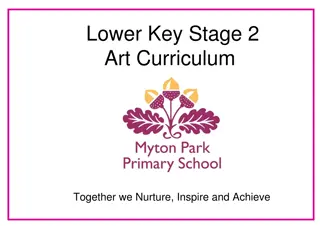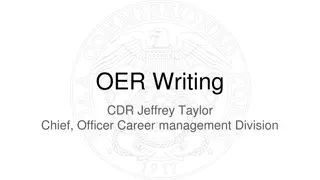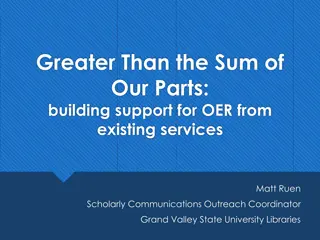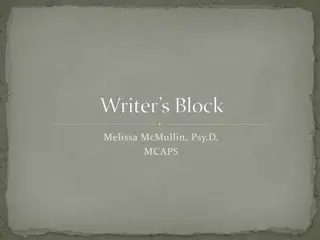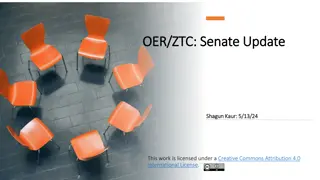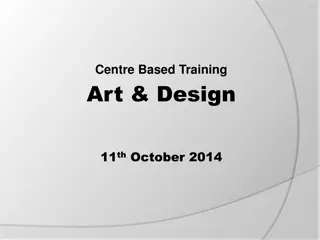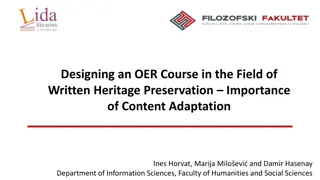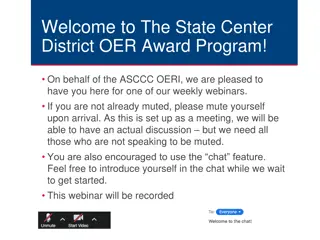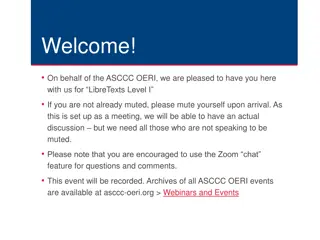Modern Art Outlining Techniques - OER Writing Class
This OER writing class focuses on grounding CUNY students amidst disorientation, guiding them to narrow research ideas, create outlines, and overcome writer's block. Learn how to structure an academic paper effectively.
Download Presentation

Please find below an Image/Link to download the presentation.
The content on the website is provided AS IS for your information and personal use only. It may not be sold, licensed, or shared on other websites without obtaining consent from the author.If you encounter any issues during the download, it is possible that the publisher has removed the file from their server.
You are allowed to download the files provided on this website for personal or commercial use, subject to the condition that they are used lawfully. All files are the property of their respective owners.
The content on the website is provided AS IS for your information and personal use only. It may not be sold, licensed, or shared on other websites without obtaining consent from the author.
E N D
Presentation Transcript
OER WRITING CLASS DAY Modern Art, May 2nd, 2024
GOAL OF CLASS TODAY To ground ourselves during a disorienting time to be a CUNY student To learn how to narrow down research and ideas into an outline To eliminate the fear of the blank page that comes with writing
1. A THESIS (can be formed in the beginning or after gathering quotes and notes which student are you?) Student A: your thesis is ready in the beginning of the outline writing process: You have a clear idea of what you want to write about, you picked your artwork based on an argument you want to make, you prefer to work chronologically in the writing process and edit your thesis later if needed Student B: your thesis is better suited for the end of the outline writing process: You have no idea what you want to argue and need to jot down quotes and notes to figure it out, you prefer to see what ideas come from the material you have so you do not need to make any edits WHAT DO I NEED FOR MY OUTLINE? 2. Quotes and Formal Analysis Notes 3. An Intro Paragraph (no more fear of the blank white page!)
HOW SHOULD I USE MY SOURCE QUOTES AND NOTES FROM FORMAL ANALYSIS IN MY OUTLINE? Search for quotes in your source that will be useful for you or that stick out Using notes from your own writing on your topic At the end of this operation, the student will have at her disposal a pile of ordered, notated texts ready to be consulted in the writing of the essay. This is an outline. Everyone s looks a bit different. Observe where connections can be made are there similarities? Similar themes? These are subtle hints waving out to you, asking to become body paragraphs!
TITLING YOUR PAPER The title tells you where you are going If you're talking about a certain period or artist, that should be in the title Examples: Salvador Dali: The Construction of the Image, 1925-1930 Ennio Valentinelli: a Forgotten Futurist Utopia : the avant-garde, modernism and (im)possible life Marxism as World-View and Two Early Avant-Garde Movements
GENERAL OUTLINE FOR PAPERS BODY PARAGRAPHS (around 5-8) these explain the EVIDENCE and ARGUMENT CONCLUSION wrap it up Proofread your writing and cite sources! INTRO PARAGRAPH 1. hook 2. transition 3. Thesis is here 1. Topic Sentence what is this paragraph about? What is it going to argue? 2. 2-3 sentences making that argument 1. Avoid Grand Overstatements and simply summarize what you did 2. tell the reader where they have been and why that was important More on this next week!


